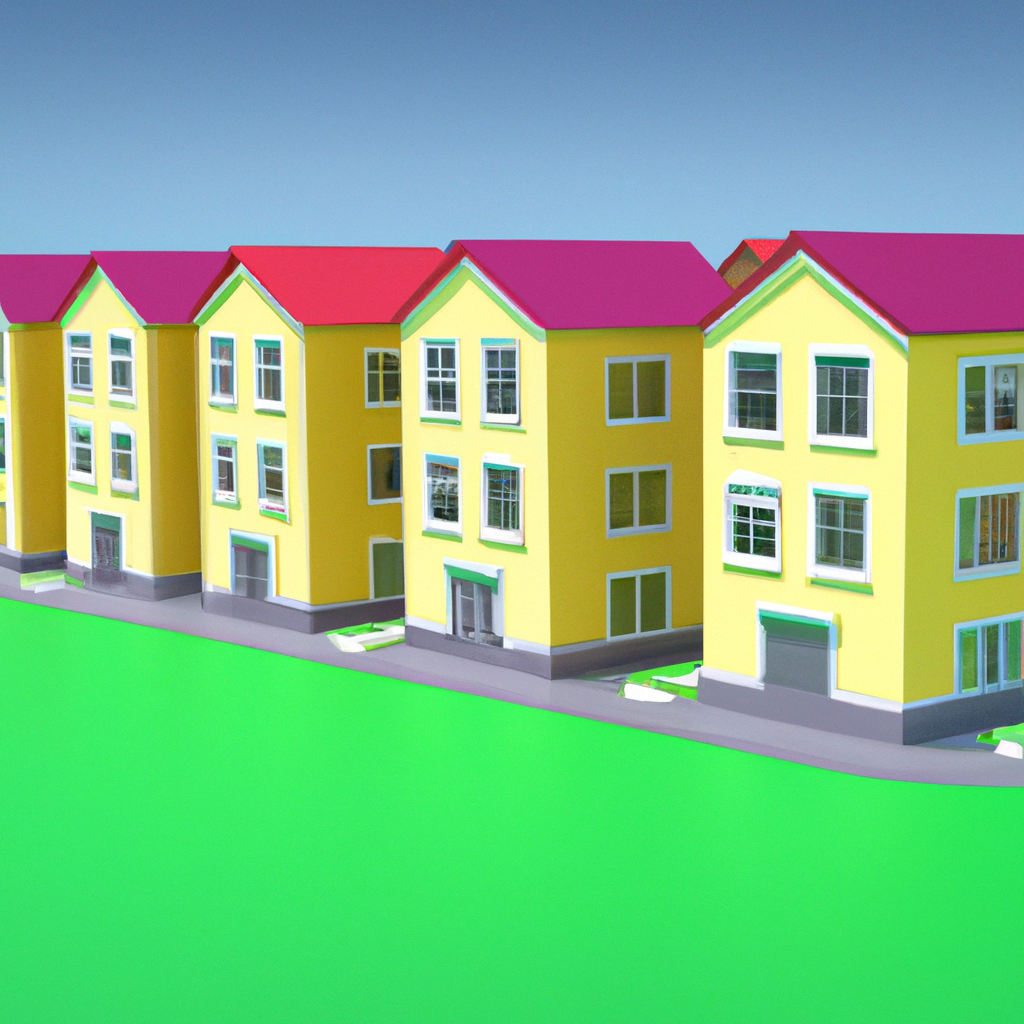Contact Us
Meet Our Team

Daryl

Kevin
Portfolio


Latest News

Investing in Multi Family Real Estate
Benefits of Investing in Multi Family Real Estate

If you're looking for a great way to grow your wealth and secure your financial future, investing in multi-family real estate may be the perfect fit. Join us as we dive into the many benefits that this type of investment can offer!
Introduction to Multi-Family Real Estate Investing
Multi-family real estate investing offers many attractive benefits for those looking to purchase a rental property as an investment. As the name implies, multi-family properties are houses, apartment buildings, condominiums or other types of dwellings that contain multiple units that can be rented out and generate monthly income.
Generally speaking, multi-family homes offers investors the ability to achieve improved cash flow with increased net operating income potential. Additionally, these properties are typically more affordable than other real estate investments and can often provide tax savings through depreciation deductions and passive loss rules.
Multi-family homes also provide investors with diversification of their portfolio by diversifying across markets and sectors — meaning they can own more real estate without increasing risk exposure too dramatically. Furthermore, purchase costs tend to be less overall when compared to alternative investments due to economies of scale in associated maintenance costs, taxes and insurance. Lastly, multi-family investment properties tend to be easier to sell than single family homes because they have multiple rental units that appeal to a larger variety of buyers.
Advantages of Multi-Family Real Estate Investing
Investing in multi-family real estate offers a variety of advantages. The first is the higher rate of return you can expect to receive. Multi-family properties tend to have lower risks because you’re collecting rent from multiple tenants in the same unit, rather than relying on just one tenant’s rent to cover your expenses and make a profit.
Multi-family properties also have greater liquidity than single family homes and are easier to finance with lower down payments required. They also offer financial diversification that reduces risk further as you spread your investments across different asset classes.
You will reap benefits that come with stabilizing cash flow – especially when occupancy levels remain high – along with potential long-term appreciation of your investment as market conditions continue to improve into the future. Additionally, multi-family properties provide management opportunities invest while providing a modest amount of income and the potential for growth long-term; they can be an effective wealth building tool for investors who want to diversify their portfolio and begin accumulating rental real estate over time.
Financing Options for Multi-Family Real Estate
When it comes to financing a multi-family real estate investment, there are a number of options available for potential buyers. When taking out a loan, lenders consider factors such as the creditworthiness of the borrower, the amount being borrowed and the property type. Multi-family properties can be an attractive option due to the possibility of generating rental income from multiple units.
Conventional mortgage loans: Multi-family real estate investments are potentially attractive investments for private lenders who have access to large amounts of capital. These loans feature interest rates lower than what is offered on hard money loans and often have longer terms and more relaxed requirements than other types of financing.
Hard money loans: This type of loan is typically used short term by investors looking to acquire properties quickly or renovate a distressed property in need of repair. They offer shorter repayment terms, higher interest rates and more relaxed qualification requirements than conventional mortgage loans, but because they are secured by collateral, they may still be obtainable despite a low credit score or lack of liquidity.
Government-backed loans: Investors may qualify for government-backed loan programs specifically designed for multi-family properties, many with lower down payment requirements than those associated with conventional mortgages. Examples include FHA Section 207/223(f) which allows borrowers to finance up to 90% of the property’s purchase price or value; USDA Rural Development 515 program which offers low rate or deferred payment options; HUD Section 221(d)(4) which can finance up to 87% of rehab costs for primary residence; and SBA 7(a),504 and 205/2533 Loan Guarantee Programs which allow businesses to borrow up to $5 million and provide long terms at competitive interest rates backed by government guarantees.
Private Equity Financing Options: In addition to conventional mortgage lending sources, there are factors that specialize in providing creative debt structures tailored specifically for multi-family investors—such providers use expertise gained through past transactions as well as their own previous experience in underwriting investor-owned properties. Commercial banks also increasingly provide specialized services tailored towards individual investor needs when it comes to multifamily real estate investing.
Tax Benefits of Multi-Family Real Estate Investing
Multi-family real estate investing provides many unique and beneficial tax advantages. Tax laws are always changing, so investors should consult with a qualified tax advisor for detailed advice about the current benefits for their particular situation.
One of the most significant tax advantages of multi-family investing is depreciation. Section 179 of the Internal Revenue Code (IRC) allows investors to deduct up to $25,000 in costs associated with buying or improving a property in the first year, then allow 1/27.5 th of those costs to be deducted annually (for commercial properties). This accelerates depreciation over a regular 27.5-year period, helping investors reduce taxable income each year. Depreciation can significantly reduce the amount of taxes you pay!
Multi-family real estate can also provide numerous other tax benefits:
• Capital gains taxes - after holding an investment property for more than one year, any profits made when selling will typically be taxed at 15% or 20%, depending on an investor's income when filing taxes.
• Interest expenses - interest payments made on investments may be deducted at tax time. This can really add up over time!
• Incentives and credits - Investors may qualify for investment incentives such as 1031 exchange or other credits if they meet certain requirements set by the IRS or their state government.
• Favorable deductions - there are many items that may qualify as business expenses and can be deducted from taxable income such as advertising costs, legal fees and professional services. Investors should consult with an experienced CPA to ensure all eligible deductions are taken advantage of during tax time.
Ultimately, multi-family real estate offers some significant financial benefits that have been designed to help encourage more people to invest in these types of assets for long-term wealth generation. With the proper guidance from a qualified professional, savvy investors can minimize their taxable liabilities and take full advantage of all available incentives from federal and state governments!
Finding the Right Multi-Family Property
Finding the right multi-family property is critical in making successful investments in multi-family real estate. When searching for properties to invest in, potential buyers need to meticulously evaluate the physical, financial and demographic characteristics of individual properties.
Physical characteristics include items such as rentable area, number of units, age and condition of construction, presence of amenities such as air conditioning or parking, location and zoning rules. Financial characteristics evaluate return on investment by taking into account income, expenses, vacancy rates and rent levels. Demographic characteristics seek to measure the target tenant pool by looking at past census profiles and current trends affecting housing stock in a given neighborhood.
Additionally, potential buyers should pay close attention to both short term and long term economic trends that impact the local market including unemployment rate, income level distribution and population growth patterns that may largely drive demand for rental housing in a certain market. Ultimately when selecting an appropriate multi-family real estate property investors should carefully weigh these factors before making a commitment to purchase a property.
Managing Multi-Family Properties
Managing multi-family properties can require a significantly larger investment of time, money, and effort than single family investments. For new investors, there are some important points to consider before jumping in. Many investors overestimate the benefit of economies of scale with larger properties and fail to research the local market adequately. Thankfully, with proper planning and preparation, multi-family investment can yield great financial returns with minimal effort.
It is important to understand what type of tenant you will be targeting – families or corporations – as this will dictate rental rates and the types of amenities that need to be included in your properties. Selecting suitable tenants requires clear tenant screening policies such as credit history checks and background checks that must be followed consistently. Once tenants have been signed, implementing consistent maintenance and renovation procedures is essential for achieving success when dealing with multiple tenants in different units at one time. Evaluating lease terms for renewal or modifications also plays an important role in protecting your investments from market fluctuations for long-term profitability. Finally, managing different revenue streams from added amenities such as parking spaces or storage units can help generate additional income for an investor that is committed to working their property portfolio skillfully over time.
By taking an educated approach when entering the multi-family real estate market, investors can set themselves up for a long-term successful investing career with minimal risk exposure while increasing returns on their investments year after year.
Benefits of Investing in Multi-Family Real Estate
Investing in multi-family real estate can be a great way to build long-term wealth. This type of investment offers several advantages - from cash flow to tax benefits and higher returns than single-family rentals. Multi-family real estate investments can vary in size, from smaller duplexes up to large communities with more than 100 units, giving investors a variety of options.
One of the biggest advantages of investing in multi-family real estate is the potential for cash flow. When you purchase a fourplex, for example, your occupancy rate must only be 75% to cover your mortgage expenses, leaving 25% as available cash flow that can be used for other debts, living expenses, or saved for future investments. Another benefit is the potential for greater appreciation over time due to economies of scale - since you’re potentially buying more than one unit at once, you’re able to get it at a lower price per unit leading to a bigger upside when it comes time to sell.
Multi-family investments also provide certain tax benefits like depreciation and 1031 exchanges that can help reduce your taxable income and are unique opportunities not available with other types of properties. Additionally, they tend to generate higher returns when compared with single-family rental properties due to their operating efficiency - it costs just as much time and money (if not less) to manage 4 units as 1 unit. Finally, multi-family buildings allow investors more flexibility when it comes time to either rent out or resell the property allowing them more control over their investment timeline and exit strategy.
Conclusion
To sum it all up, multi-family real estate offers investors a great opportunity to develop long-term income streams. And given its reliable returns, the stability of this sector makes it the perfect asset for a diversified portfolio. Plus, compared to other types of real estate, multi-family properties can offer investors stability and capital growth opportunities with low volatility.
Finally, investing in multi-family properties can help create wealth by providing an inflation hedge when markets crash and giving you greater control over your finances with an increased cash flow. This is why many savvy investors seek out these types of investment opportunities as they often yield higher returns while providing a source of solid income.
Contact for Information or Deal Presentation

TFMS relies on the vast knowledge it has gained by operating more than 500 Units in 49 states, which together account for more than $300 million for TFMS Holding Group and Companies. The TFMS Holding Group specializes in fair and meticulous negotiating with an ever-increasing range of repeat vendors and representatives.
Headquarters
2901 Butterfield Road
Oak Brook, IL 60523
630.218.4948
Connect With Us
Useful Links
Home
Privacy Policy
Terms and Conditions
Copyright © 2022 TFMS Holdings
